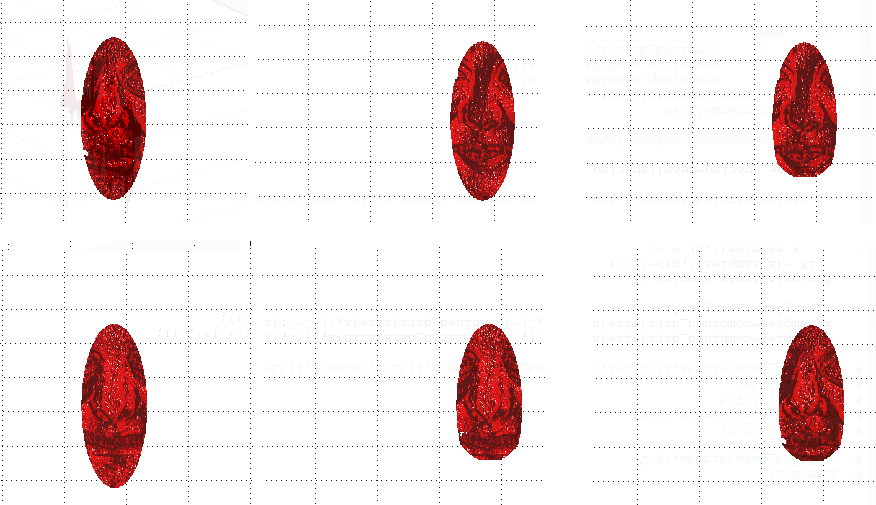 PDF version of this entire document
PDF version of this entire document
The set is reasonably well handled following the removal of two images
from almost 200 images in total, leaving a group of 86 distinct people.
Shown in Figure ![[*]](/IMG/latex/crossref.png) and Figure
and Figure ![[*]](/IMG/latex/crossref.png) are two masks that were tested on the group. Shown are just the first
few images, not a bunch of cherry-picked examples. Among the 4 binary
masks that are used (with different thresholds for depth as well),
the latter works better and it is aided by cropping that more or less
normalises the region under consideration, making it easier to sample
and subsequently compare. Worth noting are the difference around the
mouth, which reveal some teeth.
are two masks that were tested on the group. Shown are just the first
few images, not a bunch of cherry-picked examples. Among the 4 binary
masks that are used (with different thresholds for depth as well),
the latter works better and it is aided by cropping that more or less
normalises the region under consideration, making it easier to sample
and subsequently compare. Worth noting are the difference around the
mouth, which reveal some teeth.
By profiling people's expression residues and then testing to see if these profiles - be they based on a model or not - can be used to detect the identity of the person, we can reason about the approach and compare pertinent, exchangeable parts, swapping them and assessing the effect on overall performance. First, something more basic like sum-of-squared-differences will be tested as a differentiator (for match/target).

|

|
Roy Schestowitz 2012-01-08